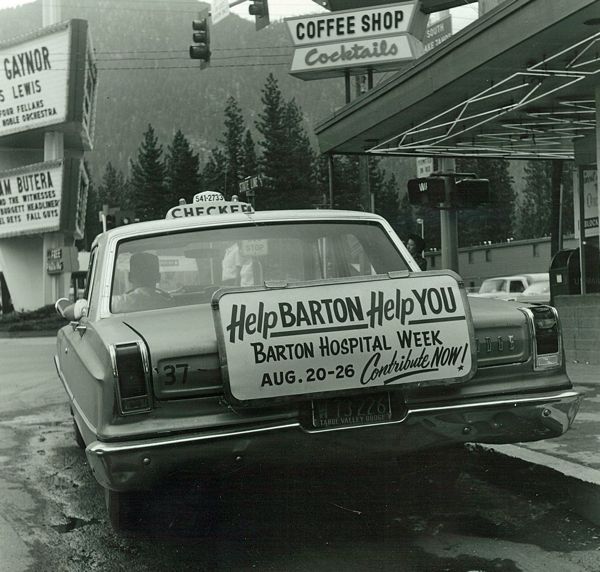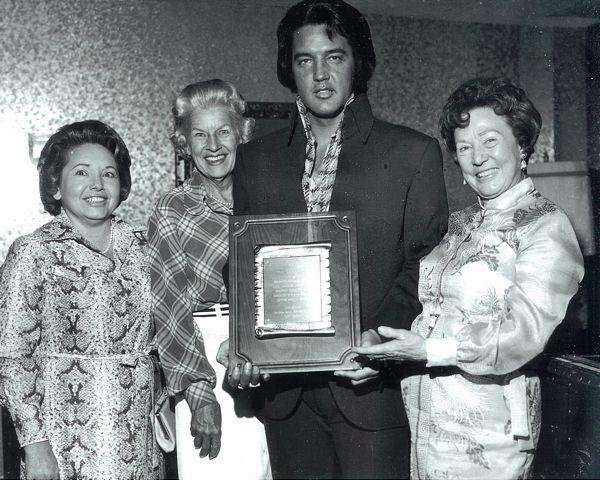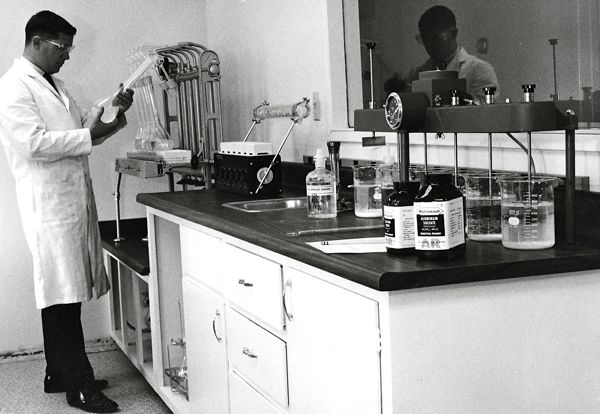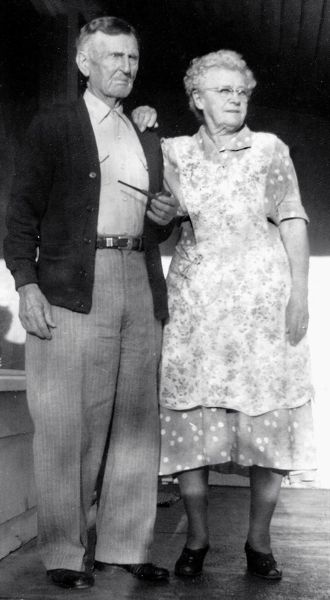Barton Memorial Hospital’s 50-year evolution a testament to tenacity of South Shore residents
By Susan Wood
The day after President John F. Kennedy was shot and killed in Dallas, South Lake Tahoe made a major move to heal its community, decrease fatalities and provide well-rounded care to its local citizenry and visitors.
Barton Memorial Hospital opened about a half century ago on Nov. 23, 1963, with 38 licensed beds, 18 physicians, five dentists and about 20 employees on a 6-acre plot valued at $200,000 that dairy farmers Alva Barton and Fay Ledbetter donated. The landmark opening came after a long-fought effort to raise more than $400,000 in funds because lives were at risk and a tight-knit group of pioneering families that reads like a “who’s who” list of South Shore history demanded more and cared much about their community’s health care.
The hospital commemorates the last 50 years in 2013 with a historical book available to those who have donated their time to Barton. Others may access an online version starting Jan. 17.
The case for a local hospital goes far and deep for those who lived alongside the health care community in the 1950s and early 1960s. Deep snow, substandard transportation, many life-threatening injuries and illnesses as well as a baby boom and limited number of independent doctors made a local health care facility a necessity.

Alva Barton and Fay Ledbetter helped bring the South Lake Tahoe community together in the 1960s to build a hospital. Barton Memorial Hospital is named after their parents, Bill and Ouida Barton. Photo/Provided
According to patient records from 1959, 1,500 emergency room visits to Carson Hospital were from South Lake Tahoe residents – nearly one-third of the hospital’s emergency room usage. In one year, the Carson-area hospital’s admissions from here totaled 467 in May 1959.
Barton and Ledbetter’s parents, Bill and Ouida Barton, even had their share of medical emergencies when both fell off a horse. Despite the danger and no local access to care for serious injuries, the late Alva Barton at age 96 told this reporter years ago that she “wouldn’t live anywhere else but Tahoe.”
In 1958, one call marked a watershed moment for building South Lake’s own hospital when a man shot himself and didn’t make it to Carson City in time to save his life, local stakeholders recounted.
Estimates showed the proposed “Lake Tahoe Community Hospital” would cost about $1 million. Federal and state grants totaled $598,010, but the community would need to reach $422,011 in donations by Feb. 8, 1962, or the funding would not be available for another decade.
Taking the bull by the horns
A citizens group was formed and spawned the Barton Memorial Hospital Association. If a business, organization or individual donated $200 or more, either would get a vote on who would serve on the hospital board of directors. Heavenly Valley Ski Resort, Safeway, Soroptimist International, South Lake Tahoe Kiwanis, St. Theresa Parish and many more stepped up to the plate.
“It’s been a labor of love in the community for a lot of people,” said Patty Olson, whose husband Walter Neal Olson served as the initial special gifts division chairman. Years later, a children’s playroom was dedicated in his honor. All of their children had to be born at St. Mary’s Hospital in Reno because Barton Hospital did not exist at the time.
“The vast majority went to Nevada (to give birth),” said Del Laine, who ended up serving as a Barton Foundation trustee. She recalled how her daughter, Brooke, was one of the first babies born at Barton in 1964. The subject is near and dear to the Laine family.
Before the hospital was built, it was the medical emergencies that got the stark attention when the fund-raising teams were spawned. Campaign slogans declared: “The life you save may be your own” and “In an emergency, will death wait?”
The necessity was loud and clear.
Leading the way to better medical care
“If someone was really hurt, we’d have to take the Old Grade (over Spooner Summit) to Reno – without four-wheel-drive,” Karen Pavlakis told Lake Tahoe News.
She reflected on the challenges that faced her father, Jim Whitely, when it came to caring for the local community. The physician responded to accidents with his own vehicle loaded with emergency supplies. Public safety units provided escorts. When people were injured in Desolation Wilderness, he was flown in to the injured party via helicopter.
Whitely, along with Dr. Peter Irving – Barton’s first general surgeon – and Dr. Ken Smith, represented the primary physicians in town handling a multitude of calls during snowstorms and limited support services.
Some involved celebrities who starred at the Stateline casinos. While Irving cared for “some Judy” – as his wife Shirley Irving described a call from the late singer Judy Garland for Barton’s 40th anniversary, Whitely had his hands full with the likes of the Andrew Sisters, Pavlakis and her sister Jane Callahan recalled.
This was nothing new. The two women said their father had developed a reputation for being a doctor of entertainers, and that legacy stuck. Rock legend Elvis Presley donated money to Barton in 1973 for an intensive care unit that opened two years later. It was named after his mother, Gladys, whom orthopedist Dr. Paul Fry cared for. Presley needed care when he contracted the flu and was forced to cancel his remaining concerts at the Sahara Tahoe (now the Horizon) after one sold-out show.
When superstar singer, actress Bette Midler filmed “Jinxed” in 1981, she donated $10,000 to the Barton Hospital Auxiliary – which in turn funded a new birthing suite. Ed Asner, Duke Ellington – the list goes on and on of celebrity connections.
“When we were young, we’d go down to Harrah’s (to see a show) for our birthdays, and he’d always get called,” Callahan said of her father. The beeper would go off and Whitely would need to spring into action, the sisters remembered of their late father during their childhoods. Callahan’s eyes welled up when she reminisced about her kind-hearted, hard-working father, who died in 1989 of brain cancer.
Callahan said she’s been dreaming about her father lately.
“I’d look at my husband and tell him I can smell dad’s medical bag,” she said.
Unbeknownst to Callahan, her sister brought the iconic symbol of their father’s work to the interview. The duo took out tools and reflected on times when the bag came out – sometimes to their detriment if it meant they were getting a shot.
“I remember the noise it made when it opened. All us girls would run out and try to carry it,” Pavlakis said, while demonstrating the fold-out design. She pulled out an otoscope. “God knows how old this is.”
More than the noise, Callahan said she remembers the smell – a “septic, pilly” scent of the bag. Whitely shared stories of his day around the dinner table and “always made us laugh,” the sisters recounted of doctor visits from Whitely’s office. It was located where the Lake Tahoe Art League building now sits next to the Lake Tahoe Museum.
Back in the early 1960s, some people bartered for medical care. The sisters recalled their father bringing home dresses and allowing a contractor to fix their roof.
“Sometimes he didn’t charge people,” Pavlakis said.
When it was time for their own family medical care, the girls hid under the Jeep to no avail.
Children may have shied away from seeking care, but the two sisters recalled how smokers would go to Whitely because, if anything, he was not judgmental because he smoked.
“He’d say to them: ‘Just cut back’,” Pavlakis said.
However, the attitude changed when a boy on a motorcycle tried to pick up Callahan on a date. He let the boy borrow the family car, and that was the last date with him.
“He never allowed us to ride a motorcycle,” Pavlakis said. “He saw too many accidents. He’d say: ‘The motorcycle never wins.’”
Still, the sisters reflected on quality time with their father and believe his time lives on in the legacy left in helping the hospital get off the ground.
“Mom used to say: ‘Jim could diagnose anything’,” Callahan said.
Just after he retired a year before he died, Pavlakis asked her father what medical discipline the family practitioner would have gone into.
“He said: ‘I’d be a cardiologist because matters of the heart are so interesting’,” she said.
The comment proved prophetic.
Callahan developed a blood clot recently.
“I was scared. But my dad’s hospital saved my life,” she said.
And, it added another to the local community. Callahan’s granddaughter, Cienna Marie Griffin, was born there within this last year.
From accidents and babies to the birth of advanced medical technology and orthopedics
Barton Memorial Hospital has come a long way since the hospital represented a glimmer in the eye of the community.
One could even argue it’s not even the same hospital as the one that opened its doors a half century ago. Now it has a larger footprint, rooms are cozier, equipment is more computerized and specialties are more pronounced. There is even evidence of decades of personality in its skilled nursing facility.
Within one year of its opening, the 23,000-square-foot hospital built in the shape of a snowflake operated in the black – a notable feat.
In the mid-1960s, the South Lake Tahoe community grew to 7,500 year-round residents – up from the 400 of 15 years earlier when unrelenting snowstorms buried the South Shore in the winter of 1951-52.
In the 1970s, new hospital wings were added and the ICU opened.
Another decade later, the ambulatory wing came on the scene and was joined by a pharmacy and birthing room. The radiology department was expanded.
In the 1990s, Barton, as a health care enterprise, built the Carson Valley Medical Center to extend its reach. Other practices such as Stateline Medical Center came on board. Mammography, laser technology, nuclear medicine, X-ray and CAT-scanning divisions were upgraded.
In addition, another 60,000 square feet expanded the hospital space that opened up the emergency and surgical departments. A nearby community clinic would add a new, much-needed realm of health care for the neediest of the community.
For our aging population in need of extra help, the Barton Skilled Nursing Facility opened with 48 beds – where a “healing garden” at the entrance marks the contributions of the Ledbetter family led by sister and brother Jessica and Kirk. They are descendants of Fay Ledbetter.
In 1991, the Barton Foundation was formed with 21 volunteer board of trustees.
After the century turned, medical imaging dominated health care. Seismic upgrades were made. Physician partnerships spread across the land. Employees topped 1,000. Medical ski clinics at Heavenly, Sierra and Kirkwood were built to stabilize those participating in Tahoe’s primary choice of recreation.
Orthopedists associated with Barton have made a name for themselves – from the early beginnings with Fry to U.S. Ski Team Dr. Terry Orr. Plus, a comprehensive physical therapy division and occupational health department round out the offerings for skiers and boarders trying to keep their limbs and joints intact and healthy.
“In recent years, the focus on improving quality and state-of-the-art technology has benefitted patients and allowed our small town hospital to offer services on par with larger cities,” foundation board Chairwoman Julie Regan said. Regan is convinced that with aging baby boomers from the Bay Area continuing to visit Tahoe, the orthopedics program will become increasingly more important.
The wave of the future for Barton leading into the next 50 years and beyond also includes private patient suites, electronic ICU technology and retail health care kiosks.
“What (has) really impressed me most about the history of Barton was the way the community rallied together to fund raise for the creation of the hospital and to help it expand. It wasn’t by happenstance that the hospital was formed. It took a lot of collaboration, vision and a ton of hard work by everyone in our community,” Barton spokeswoman Monica Sciuto said. “I have great pride in what we have been able to accomplish over the last 50 years. It is amazing to think that we started with just a small 38-bed hospital and have grown to what we are today.”
(Click on photos to enlarge.)












Ah, the hardships of ‘pioneering’ days. . . The part about their running in the black financially as a feat I can personally relate to: my Mother was the first controller at Barton, having been suggested for the role by her boss, Brad Murphy, the leading CPA at the time, who sold his practice when he became the first Mayor (starting a City from scratch was very time-consuming). She was thought to be a good fit for Barton, given their size then.
Dr. Whitely’s office in the now Art League building was with neighbors in the next door Sheriff & Courthouse, now occupied by the Visitors’Authority. I appeared in front of Judge Rudy Buchanan (who also owned the theater); at the ripe age of 17, he took my license away for 30 days for the first speeding ticket in my ’57 Chevy convertible.
Ms. Regan’s comment is a bit of a “déjà vu”: the renowned Dr. Steadman helped create the global reputation for “America’s All-Year Playground” in orthopedics – before Vail made him an offer to build him a new clinic there.
Loved the story. The Huards have always been grateful for the great care we have received there. The hard work of voluneers to keep Barton’s future improving continues today. Thank you to all who make our community one that I would never leave.